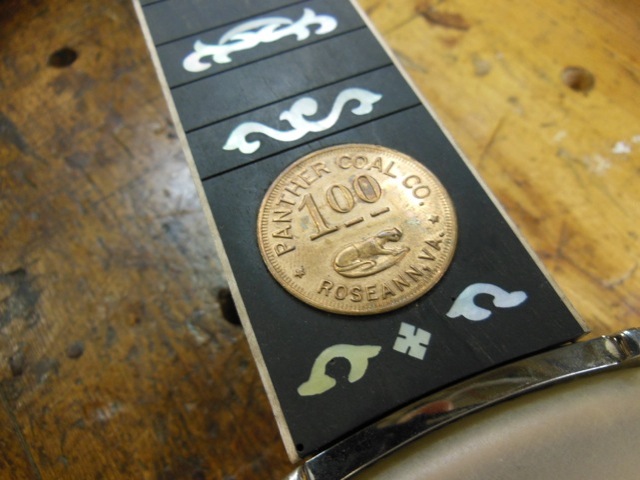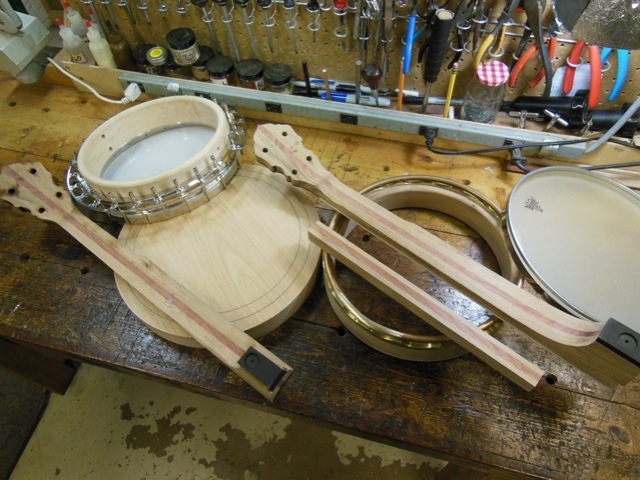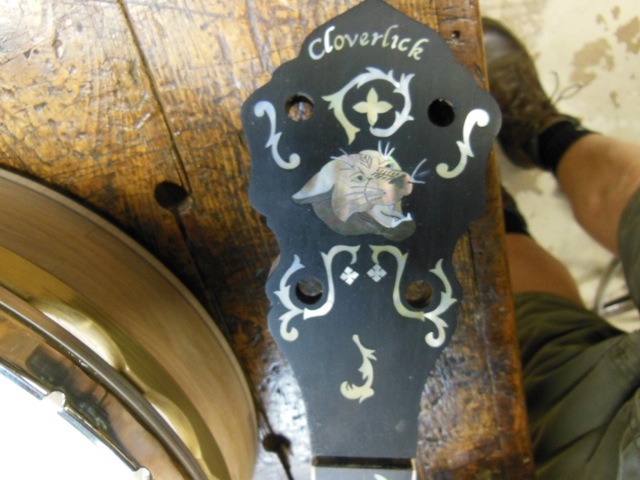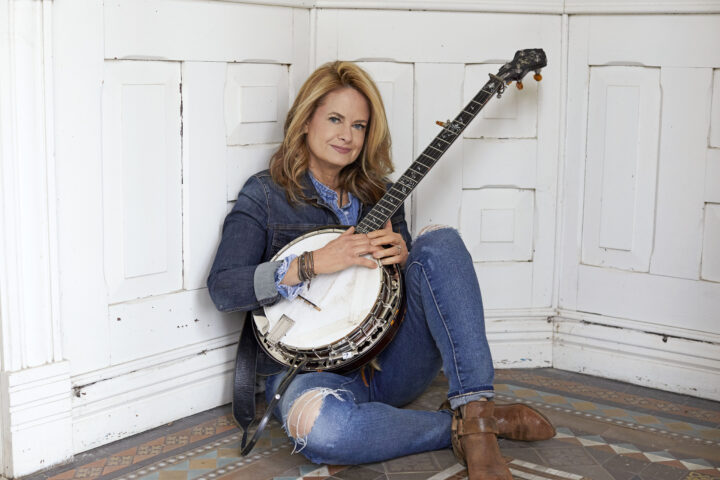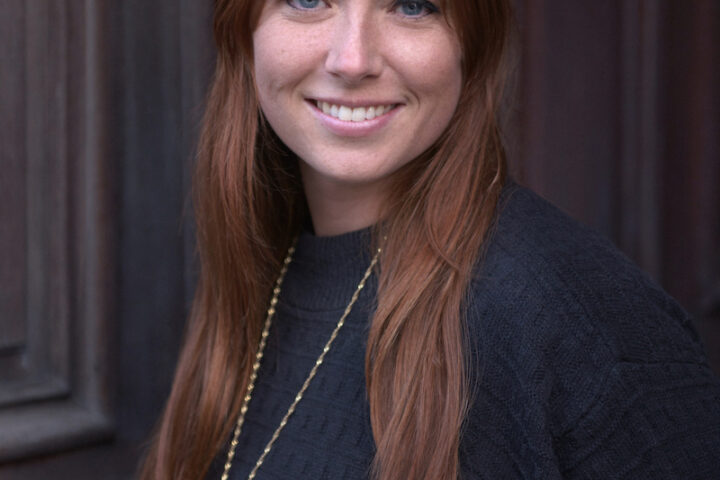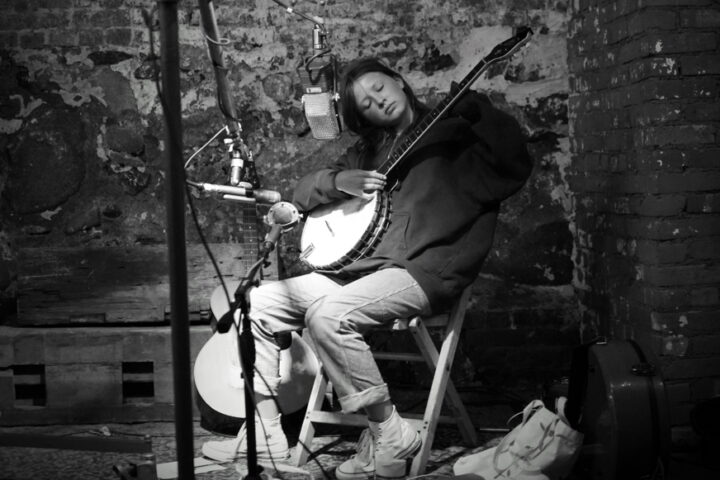For our first non-guitar Bench Press, we called Jeffrey Kramer of CloverLick Banjo Shop. Unlike so many bluegrass-leaning banjo makers, Kramer focuses on both resonator models and old-time, open-back instruments. In this Bench Press interview, he tells us about a pair of banjos he’s currently working on, his 100th and 101st instruments, that are going to a well-deserving recipient. We were tipped off to this Burlington, Wisconsin banjo maker by one of our readers; if you want to suggest a builder for a forthcoming Bench Press, just drop us a line.
Fretboard Journal: What’s currently on the bench at CloverLick?
Jeffrey Kramer: I’m working on a unique pair of banjos – they’re both parlor grade. I have three different grades of banjos; the parlor is the most deluxe kind. They’re a matched pair, a resonator banjo, bluegrass style and an open-back banjo. They’re both made out of the same woods and have the same inlays and the same grades. They’re my 100 and 101st banjos, what I call a parlor pair. It’s for someone that can play both bluegrass and clawhammer styles.
FJ: What sets the parlor apart from your other styles or models?
JK: It’s the level of detail in the inlays and the bindings. There are more accoutrements or eye-candy on them. As far as tone and playability, they all will play and sound the same regardless of what grade you get. It really is a matter of how much detail someone likes on their banjos. Some people like them real simple; some people like real ornamented ones. It depends on the player.
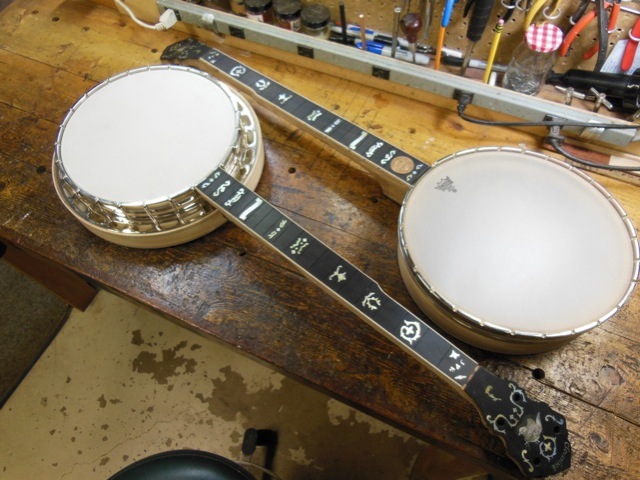 FJ: Your open-back banjos have a beautiful, clean look to them.
FJ: Your open-back banjos have a beautiful, clean look to them.
JK: I sell the most of the plain vanilla ones. I emphasize the natural beauty of the woods, put the gun oil finishes on them. You don’t need anything else on them. They’re beautiful just in and of themselves.
FJ: Who is this pair for?
JK: I’m making them for myself. I’ve never had a pair like that. So I’m my own customer.
FJ: Are you incorporating any special designs in these?
JK: Well, all the open-back banjos now come with an antique coal script coin in the fingerboard… or the heel, some people like them there. The banjo comes from the tradition of working people. I think that the coal scripts in there really tell a major part of the culture or tradition that the banjo comes from.
I did find some coins from the Panther Coal Company in West Virginia, and those are on this banjo. You’ll notice there’s a Panther on there and the number 100 banjo is getting that Panther Coal Company $1 coin on it, which says 100 right across the front of it. So that’s kind of how I tied it together.
FJ: Where did you find the coins?
JK: I have a friend in Charleston that goes to a lot of flea markets. He picks them up for me when he sees them. I have a whole drawer full of coal scripts. I have copper ones, brass ones and some nickel ones. They’re from all different coal companies all over West Virginia. There were hundreds of them at the turn of the century.
FJ: Where do you get your wood from? What is your built process like?
JK: I mostly get renewable woods. I try to get United States woods if I can. I get them out of Bailey Wood Products in Pennsylvania. I get hickory, white oak, maple and black walnut. They’re all Northern cut woods, kiln-dried, aged there and picked to my specifications. I also use African mahogany, which is plentiful, but it’s not a U.S. wood. For the fingerboard, I get blood wood, which is a Central American wood; cocobolo, which is a South American wood; African black ebony, which is in good supply. I also use Indian rosewood. I try to use woods that are not endangered. I don’t use any Brazilian rosewoods.
FJ: How do you build your necks?
JK: The necks are built so that there’s a center layer, and the two opposing halves of the neck are rotated and flipped so that the wood grains are diametrically opposed. It’s an old-style way of building necks that makes them very stable, because if one piece of wood wants to go one way, the other one goes exactly the opposite direction. It works very well, but it does require the wood to be cut a little different so you can oppose the halves that way.
FJ: And your rims?
JK: I make block style rims, and that’s different than a steam-bent, laminated rim. I think the block style rims come to their best tone much faster than a laminated rim. The laminated rim takes a while to relax, so that the vibration carries through the wood nicely. They say you have to play them in, and they’ve got to break in – it takes a while. One of the reasons that the block rims seem to come to tone quicker is because the wood’s relaxed when it’s built. You’re basically just lathing it off – you’re not bending it.
FJ: And do you make the tone rings yourself? What’s your style, and how did you come to building those?
JK: I really liked the old Vega Electrics; they were my favorite sounding banjos, the pre-Whyte Laydie model. I build and bend my own tone rings here. I machine them, cut them and I put them through various plasticizers to enhance the tone and metallurgy of the tone rings. I changed it a little bit [from the originals]. I use a quarter-inch scalloped lower hoop that’s got the curves and cut in it. The traditional one was 3/16. I felt a little extra mass really enhanced the tone. They started using steel right before World War I, because they were short of brass for casings. So the banjo builders went to using different types of metal for the hoops, and they never went back to using the bronzes and brasses. But the old Vegas, the best sounders, all had non-ferrous metal upper rings. And that’s what I use – a bell bronze upper ring.
FJ: How did you start out as a banjo builder?
JK: Well, I’ve been playing banjo since I’ve been 10 years old, and I’ve always been wrenching and fixing, and doing that kind of stuff. In my early 20s, there used to be a fellow named C.C. Richelieu that had a banjo shop about 100 miles from here, up by Madison. I used to go up there and see what he was doing, and then I bought a banjo from him years ago. I really enjoyed looking at his shop.
I had a career in the banking world; I was an internal auditor. About 15 years ago, I decided I was tired of that. I went into the musical repair business. I did violins and guitars, all that stuff. Then somebody asked me to build them a banjo and I’ve been building ever since! That first one went out in 2003, so I’ve been building banjos for a little over ten years. I really started building them exclusively about four or five years ago.
FJ: And are you going to go back to banking any time soon?
JK: Hope not. You know, there’s a lot more joy in delivering a banjo to somebody than their auditor report.
